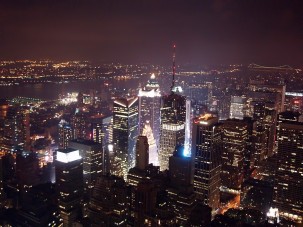renewable energy16
-

How Much Energy Does NYC Waste?
While the New York metropolitan area has been deemed the most wasteful megacity in the world, New York City is considered one of the world’s greenest. But how much energy does New York City waste and what is it doing about it?
-
California Takes the Lead on Climate Policy
While current technology could be used to achieve the new climate policy goals, it will be far easier to meet and exceed the new standards if new technologies are developed and implemented. For California, the key will be the rapid development of the electric car.
-
The Environment and the 2016 Elections
The environment holds the potential to emerge as a political issue in the 2016 presidential election in part because it has gone from being a non-partisan consensus issue to a deeply partisan ideological issue. The battleground will be for the heart and mind of the independent voter.
-

Where is Solar Power Headed?
To have a shot at curbing the worst impacts of climate change, we need to extricate our society from fossil fuels and ramp up our use of renewable energy. Where does solar energy stand today, and where does it need to go in order for us to make the transition to renewable energy?
-
A Carbon Tax Is Not Feasible or Practical
The idea behind the carbon tax is that by raising the price of fossil fuels, one promotes energy efficiency and, as fossil fuels become more expensive, renewable energy technologies will become more competitive. I am certain this is true. But few elected officials are going to advocate higher fossil fuel prices.
-
New Report Shows How U.S. Can Slash Greenhouse Emissions
Researchers Map Low-Carbon Investments and Policy Changes
-

The Greening of China
China became the world’s largest carbon polluter in 2006, surpassing the U.S. But it is also rapidly going green through cutting coal use, investing heavily in renewable energy and launching the world’s largest carbon trading system.
-

The Energy to Fight Injustice
The enormity of these anti-nuclear policy decisions is difficult to exaggerate. Energy consumption is an inescapable requirement of development, and renewable energy sources alone cannot satisfy the energy demands of China and other developing nations. They now have no choice but to burn massive amounts of coal if they wish to raise their living standards.

By studying thousands of buildings and analyzing their electricity use, Columbia Climate School Dean Alexis Abramson has been able to uncover ways to significantly cut energy consumption and emissions. Watch the Video: “Engineering a Cooler Future Through Smarter Buildings“
